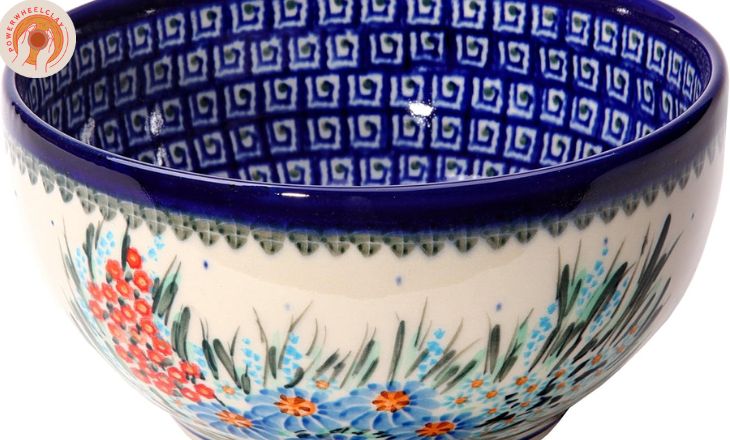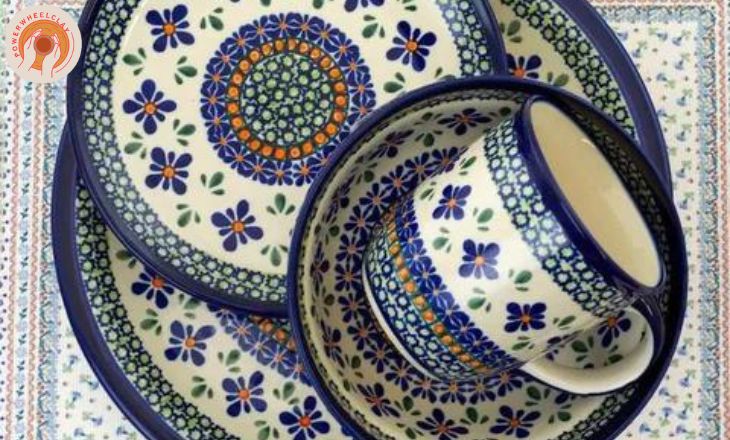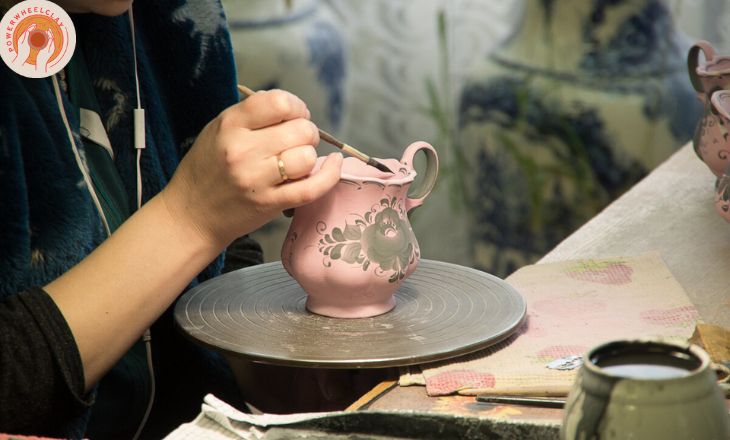Polish pottery pieces are a treasure trove for collectors and enthusiasts alike. Imagine holding in your hands a piece that tells a story of tradition, craftsmanship, and artistry – each brushstroke carrying the legacy of generations past. In this article, we will guide you through the key characteristics that define Polish pottery, empowering you to recognize these gems amidst a sea of ceramics.
An Overview of Polish Pottery
Polish pottery patterns are rich in symbolism and history, often inspired by nature, folklore, or traditional designs. One popular motif is the peacock feather, symbolizing beauty and prosperity. Another common pattern is the Polish eye of the peacock, representing protection and good fortune. These intricate designs add visual appeal and carry cultural significance, making each pottery a meaningful work of art.

Polish pottery patterns continue to captivate hearts with their timeless beauty and cultural significance. The vibrant colors and detailed patterns of Polish pottery reflect the country’s artistic heritage and craftsmanship. From floral motifs to geometric shapes, each design tells a unique story that resonates with collectors worldwide. The process of creating these patterns requires precision and skill, showcasing the dedication and expertise of Polish artisans.
How to Identify Polish Pottery
When identifying Polish pottery, one key aspect to consider is the intricate and vibrant patterns commonly found on these ceramics. Traditional Polish pottery patterns often feature floral motifs, geometric designs, and delicate hand-painted details that set them apart from other types of pottery. Keep an eye out for specific elements such as the famous peacock eye pattern or the unique cobalt blue decorations that are characteristic of Polish pottery.

Another tip for identifying Polish pottery is to look for the signature stamp or brand mark on the bottom of each piece. Genuine Polish pottery will typically be marked with the manufacturer’s logo or initials, ensuring its authenticity and quality. Pay attention to the overall craftsmanship and quality of the piece – genuine Polish pottery is known for its durability and high-quality materials used in production. By focusing on these visual cues and details, you can easily identify true Polish pottery pieces and add them to your collection with confidence.
Color
When identifying Polish pottery, it’s important to pay attention to the intricate details in the color patterns. Each piece is meticulously hand-painted with precision, showcasing traditional designs that have been passed down through generations. The vibrant hues are not randomly chosen but hold cultural significance, reflecting the rich heritage of Poland.
Genuine pieces will display a rich pigment that is evenly distributed across the surface, enhancing its overall aesthetic appeal. The colors used in Polish pottery are carefully selected to evoke a sense of nostalgia and tradition, making each piece a timeless treasure steeped in history.
Markings
One fascinating aspect of the identification of Polish pottery markings is the insight they provide into the skilled artisans behind each piece. The unique signatures or stampings not only add a personal touch to the pottery but also serve as a testament to the craftsmanship and dedication of the artists. Pieces marked as UNIKAT, in particular, showcase exceptional artistry and attention to detail, making them highly sought after by collectors.
These markings serve as a form of authentication for Polish pottery enthusiasts. By familiarizing oneself with the different marks and signatures associated with specific factories or artists, one can confidently identify and appreciate the authenticity of each piece.
Patterns
The use of the punch technique in painting Polish pottery not only adds a unique touch to each piece but also lends a sense of depth and intricacy to the overall design. The motifs, whether they be abstract florals or intricate peacock eyes, are carefully placed to create a visually stunning pattern that draws the eye in with its precise detailing. This attention to detail showcases the skill and dedication of the artists who hand-paint each piece, elevating the craftsmanship and beauty of Polish pottery.
The incorporation of symbols like the male peacock, associated with wealth and royalty in Polish culture, adds an element of tradition and history to each hand-painted creation. By understanding these underlying meanings behind the patterns used in Polish pottery, one can truly appreciate the artistry and storytelling that goes into crafting these exquisite pieces that serve as both functional wares and beautiful works of art.
Traditional Vs. UNIKAT Polish Pottery
When it comes to traditional Polish pottery versus UNIKAT pieces, the distinction goes beyond just the patterns and designs. The marking at the bottom of each vessel tells a story of its own, revealing not only the individual artist’s hand but also the collaborative effort behind traditional pieces. While UNIKAT pottery boasts more intricate and unpredictable designs, traditional pieces showcase a harmonious blend of colors inspired by nature, particularly the vibrant hues found in a peacock’s feather.
The markings on the bottom of these pottery pieces serve as a testament to their authenticity and craftsmanship. UNIKAT pieces bear the mark UNIKAT alongside the artist’s name or initials, highlighting their unique and one-of-a-kind nature. Traditional pottery is stamped with pattern numbers as well as both painting and design artists’ initials, underscoring the collective skill and expertise that goes into creating each piece.
Can You Identify Fake Polish Pottery?
When it comes to identifying fake Polish pottery, paying attention to the small details can make all the difference. Authentic Boleslawiec pottery marks always bear the stamp Handmade in Poland on its bottom, serving as a hallmark of its origin and craftsmanship. The presence of the artisan’s signature, initials, or UNIKAT designation on a piece further solidifies its authenticity. Should you come across a piece lacking these crucial markings or with a blurred stamp, it’s best to treat it with suspicion.

The quality indicators in the form of colored stickers play a significant role in distinguishing genuine Polish pottery from imitations. These stickers not only serve as symbols of quality but also signify different levels of craftsmanship and artistry. From intricate patterns to vibrant colors, each detail on authentic Boleslawiec pottery speaks volumes about its heritage and legacy.
Conclusion
identifying Polish pottery, particularly Boleslawiec pottery, can be an enjoyable and rewarding experience for both beginners and seasoned collectors. By paying attention to the distinct color schemes, intricate patterns, and unique markings characteristic of this type of pottery, you can confidently differentiate it from other varieties. With practice and observation, you will develop a keen eye for recognizing authentic Polish pieces. So next time you come across a piece of Boleslawiec pottery, take a closer look and appreciate the craftsmanship that sets it apart from the rest.
FAQ’s
What is Boleslawiec pottery?
Boleslawiec pottery is made using traditional techniques that involve hand-crafting and hand-painting each piece. It is known for its intricate hand-painted designs and durable stoneware material.
What is UNIKAT Polish Pottery?
UNIKAT Polish Pottery is a traditional handcrafted pottery from Boleslawiec, Poland known for its intricate designs and durable construction.
What are Polish pottery marks?
Polish pottery marks are unique symbols or signatures stamped on the bottom of each piece of pottery to signify its authenticity and origin
What are the ways to decorate pottery?
One unique way to decorate pottery is through the technique of sgraffito. This involves scratching through a layer of colored slip or glaze to reveal the clay body underneath, creating intricate designs and patterns. The contrast between the exposed clay and the colored surface adds depth and visual interest to the piece.
